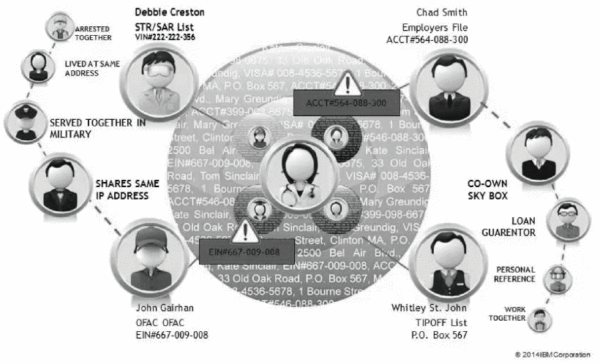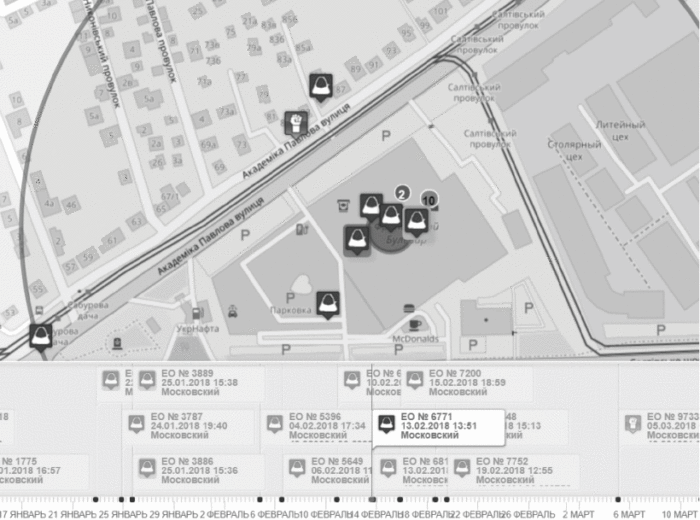Many industries are experiencing a digital transformation through the power of data, bringing new intelligence and insights into the workplace and beyond.
As part of this movement, law enforcement agencies are now looking to Intelligence-Led Policing (ILP), a model of proactive policing activity that uses data mining and analysis as a way to efficiently record and evaluate criminal evidence and find hidden patterns and hypotheses.
Research conducted by Kharkiv National University of Internal Affairs and the Directorate of National Police in Ukraine, reviewed the Real-Time Intelligence Crime Analytics System (RICAS), which combines the most advanced methods of criminal analysis to aid past and present criminal investigations.

Figure 1: Non-obvious relationships extracted from criminal environment
“The fight against crime requires law enforcement to find new approaches to the collection, analysis, and evaluation of intelligence,” said Volodymyr Strukov, a researcher from Kharkiv National University. “RICAS is the first intelligent criminal data analysis system that gathers data in one visual space, and enables law enforcement to quickly and efficiently process criminal data and distinguish links that are not at first obvious.”
The system implements elements of basic criminal analytics that allows law enforcement to see the whole picture of a crime, predictively and post-factum. As the system is a superstructure over existing databases, it can display explicitly specified links between persons who at first glance are not obviously connected to each other. In order to achieve this, the system uses several algorithms to uncover these links.
The first algorithm is a Recursive Search for relationships between suspects, accomplices, and persons of interest, which could include joint loans, sharing an address or workplace at any point in time, or using the same IP address. This analysis assists in the creation of a behavioral profile of the group. RICAS allows users to then build complex search queries, including all possible dynamic and static components—time limits, methods for committing a crime, location, etc.
The system also includes a Visual Temporal Analysis, which displays the chronology of the occurred events and time delimitation to reveal hidden spatial-temporal patterns between different events.

Figure 2: Visual Temporal Analysis on chronology of events
In order to find hidden patterns, RICAS relies on semantic analysis, as events and behavioral profiles of criminals are often described verbally. Following the semantic analysis, RICAS uses an algorithm to analyze the relationships between fixed data points, such as ‘time of incident’ and the ‘crime committed’, to generate a list of hypotheses that are difficult to detect visually or with statistical methods.
Since its deployment, RICAS has been introduced into the practice and training of criminal analysts for units of the National Police of Ukraine. In preparation for the widespread use of this technology in the coming years, the European Union adopted intelligence-led policing guidelines in 2017.
The researchers believe that this model of data mining and analysis could have wide-ranging applications in any subject area that features a large number of data points requiring subjective analysis. For instance, healthcare companies and judicial practices may benefit from the model’s ability to map data visually and find links and common occurrences that would otherwise be obscured.
For more information on law enforcement technologies and advances, visit the IEEE Xplore Digital Library.





